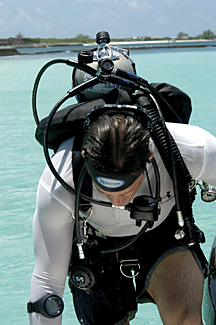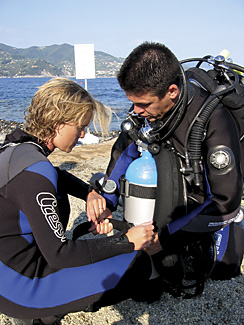DaveV
Registered
First let me say that I am not a DIR diver, but I do think the DIR methodology is far superior in many ways to other training regimes. Maybe someday I'll do fundies, but for now I am just working on building some of those basic skills. I have been diving a BP/W for about 2 years now and do have a question regarding what the DIR answer is for power inflators hose routing with a single tank. I've searched the board and still can't seem to find a definitive answer.
So... Question is how does DIR route the power inflator hose assembly- i.e both the LP hose and the corrugated hose. I see some folks run 2 inner tube pieces that hold the LP hose to the corrugated hose and then run both hoses through a bungee loop on the d-ring. I've also seen/read 20 other variants... What is the correct way? Does anything retain the assembly to the shoulder strap other than the d-ring bungee?
Also, when the LP hose comes out of the first stage, do you route it behind the corrugated hose or in front of it(closer to your back). If it goes behind it, it then has to route under the corrugated to get to the right side (closest to the center of your body) of the corrugated hose, so I assume in front is the way to go.
Pictures are worth a thousand words!
Thanks
Dave
So... Question is how does DIR route the power inflator hose assembly- i.e both the LP hose and the corrugated hose. I see some folks run 2 inner tube pieces that hold the LP hose to the corrugated hose and then run both hoses through a bungee loop on the d-ring. I've also seen/read 20 other variants... What is the correct way? Does anything retain the assembly to the shoulder strap other than the d-ring bungee?
Also, when the LP hose comes out of the first stage, do you route it behind the corrugated hose or in front of it(closer to your back). If it goes behind it, it then has to route under the corrugated to get to the right side (closest to the center of your body) of the corrugated hose, so I assume in front is the way to go.
Pictures are worth a thousand words!
Thanks
Dave







